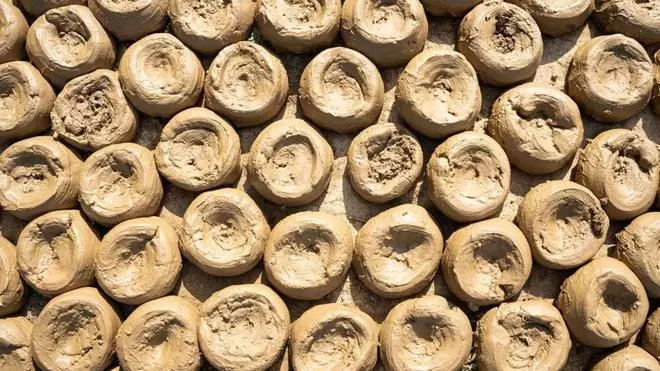Updated - May 19, 2024 at 09:00 AM.| Chennai
Amazon, Boond Fragrances revive the tradition of producing attar, naturally
By Subramani Ra Mancombu

Thedegh, a copper vessel, and a bamboo reed used in the process to make attar
For nearly four centuries, Kannauj in Uttar Pradesh was India’s perfume capital providing second life to flowers, spices, wood and clay in the creation of attar. Challenges of the 21st century and the liberalisation of the Indian economy gave way to alcohol-based perfume imports and soon it lost its crown.
At one point in time, the city had over 700 distilleries to produce attar and by the middle of 2000s, they were down to less than 200. The attar makers were forced to turn to tobacco and food flavouring markets to sustain their craft.
With the Covid pandemic setting in, the lockdown saw the Tandon siblings — Krati and Varun — wanting to do something. Their father, Pravin, had tried his hand at perfume-making at home and witnessing the local artisans struggle, the brothers decided to utilise their skills to promote these natural and oil-based perfumes.
Tapping youngsters
The pandemic saw demand rising for natural products and natural perfumes were considered more safe, non-toxic and gentle for all skins besides being easy on the lungs. The preparation process of natural perfumes, mainly attar, is environment-friendly and excludes chemicals such as phthalates.
Thus was born Boond Fragrances with the objective of reviving Kannauj’s tradition of producing attar. Also known as ittar, attar is an essential oil derived from botanical or other natural sources. Most commonly these oils are extracted via hydrodistillation or steam distillation. Persian physician Ibn Sina was the first to derive the attar of flowers from distillation.
The Boond team began introducing these fragrances among the younger generations and made them accessible across the country through Amazon’s website. On its part, Amazon offered its marketplace to help reach the product in every nook and corner of the country.
According to the Tandons, every element, from the perfume to the packaging, in Boond was thoughtfully crafted by local karigars. The packaging is handmade from recycled paper and is screen-printed. Handwritten notes and poems crafted by local school teachers are inserted in every little box, they say.
Sourcing from farmers
While flowers, herbs, spices, wood and clay find their way into the creation of attar, sandalwood is infused with botanicals to create a concentrated solution. This can help the scent of a single droplet to linger for days.
The Tandons first came up with Maati -an evocative earthy scent of the first rain on dry soil. “Maati is the smell of home. More than just a fragrance, it’s a memory of being out in the rain,” says Varun Tandon, a writer and director-turned-entrepreneur.

Cakes of clay calledtikkisdrying in the sun, being prepared for making attar
The raw materials for attar are sourced from farmers on the outskirts of Kannauj. The growers cultivate damask roses, marigolds and jasmine. Maati’s key ingredient— chikni mitti, a dark alluvial clay — is found on the banks of lakes and ponds in the region.
‘Senses are tools’
Initially, the wet clay is shaped into cakes, known as tikkis, on a potter’s wheel. These are then left to dry under the sun before the dried tikkis are fired in a brick oven. “In a day, we make up to 20 quintals (2,000 kg) of tikkis for attar. Even the broken shards from the pots we make are sent for making attar. Nothing goes to waste,” says Mohan Lal, a potter with four decades of experience supplying baked clay for Maati.
At Boond, attar is crafted using a centuries-old, time-tested technique known as Degh-Bhapka. The process is using a copper vessel or degh filled with fresh water with baked clay as the main ingredient. The degh’s lid is sealed to ensure no steam escapes, while a bamboo reed connects the vessel to another containing sandalwood oil.
The degh is heated over a gentle fire fuelled by cow dung. As the contents in the degh begin to simmer, essential oils in the clay become vapour and settle in the other vessel which is submerged in water to cool. The vapours then condense and are absorbed by the sandalwood oil. This process, lasting about five hours, is repeated until the desired potency is achieved. After extraction, the attar is aged, further enriching its complexity and depth.
Mahesh Chand, who has been involved in the process for over three decades, says senses are his tools. “When the pandemic hit, I thought there was no future and turned to farming,” he says.
But there has been a resurgence of global interest in the ability of attar makers and sellers to connect with shoppers pan-India through Amazon’s website.“Today, every other house in Kannauj has a degh,” Chand says with a smile.
Today, Boond sells over 18 products on the Amazon Indian website. It has created employment opportunities for over 15 artisans across the country.
 COMMENT NOW
COMMENT NOW